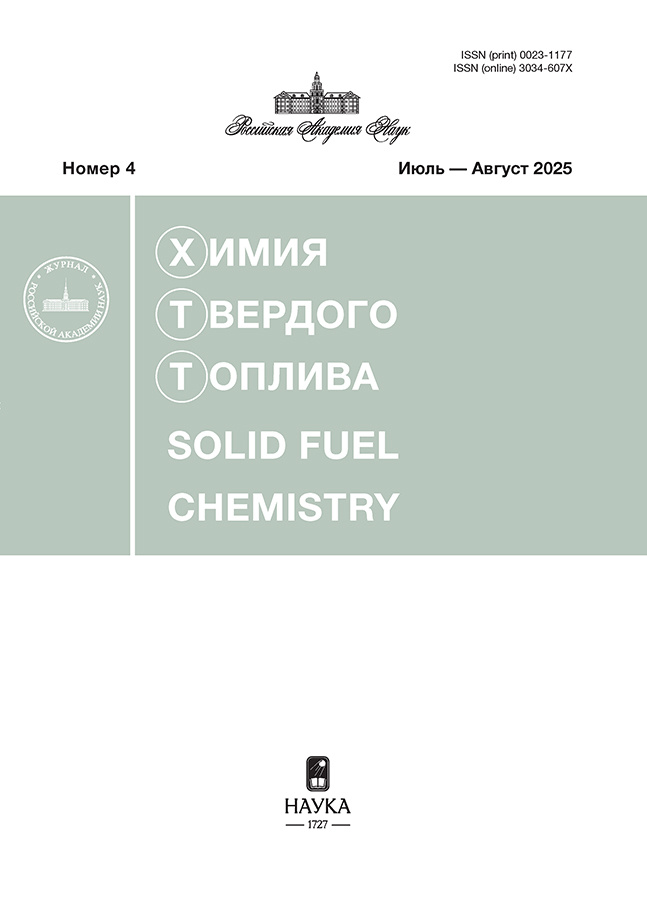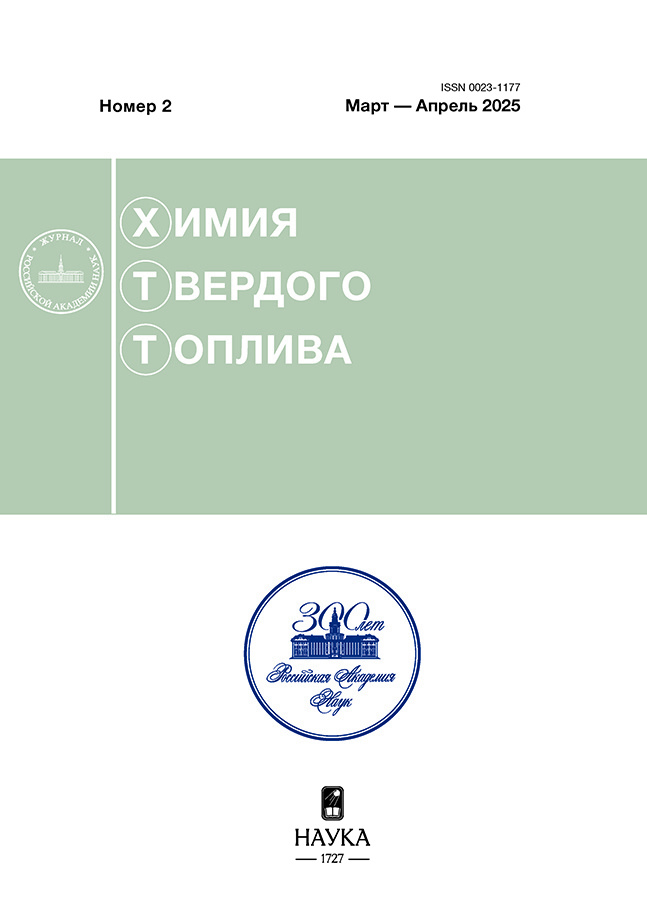Изучение процессов связывания хлорфенольных соединений верховым торфом европейского севера России
- Авторы: Зубов И.Н.1, Колпакова Е.С.1, Вельямидова А.В.1, Орлов А.С.1
-
Учреждения:
- ФГБУН Федеральный исследовательский центр комплексного изучения Арктики им. акад. Н.П. Лаверова УрО РАН (ФИЦКИА УрО РАН)
- Выпуск: № 2 (2025)
- Страницы: 51-56
- Раздел: Статьи
- URL: https://hum-ecol.ru/0023-1177/article/view/687476
- DOI: https://doi.org/10.31857/S0023117725020053
- EDN: https://elibrary.ru/KPAUDN
- ID: 687476
Цитировать
Полный текст
Аннотация
Проведено исследование процессов сорбции из водных растворов различных видов хлорфенольных соединений верховым торфом и продуктами его последовательной разборки. В качестве модельных хлорфенолов использовали соединения различной степени замещения хлором 2,4-дихлорфенол, 2,4,6-трихлорфенол и пентахлорфенол. По результатам хроматографического определения установлено, что степень связывания ХФС исследуемыми материалами возрастает в ряду: пентахлорфенол (10.9–15.5 мкг/г торфа или 31.4–44.7%)–2,4,6-трихлорфенол (16.3–26.3 мкг/г торфа или 47.6–76.7%)–2,4-дихлорфенол (19.6–34.6 мкг/г торфа или 56.8–100%). Увеличение рН среды приводит к росту степени диссоциации ХФС, увеличению их подвижности и выражается в снижении степени их связывания. Наиболее сильно влияние рН проявляется для 2,4-дихлорфенола, который характеризуется максимальной величиной рКа.
Полный текст
Об авторах
И. Н. Зубов
ФГБУН Федеральный исследовательский центр комплексного изучения Арктики им. акад. Н.П. Лаверова УрО РАН (ФИЦКИА УрО РАН)
Автор, ответственный за переписку.
Email: zubov.ivan@fciarctic.ru
Россия, Архангельск
Е. С. Колпакова
ФГБУН Федеральный исследовательский центр комплексного изучения Арктики им. акад. Н.П. Лаверова УрО РАН (ФИЦКИА УрО РАН)
Email: kolpelen@yandex.ru
Россия, Архангельск
А. В. Вельямидова
ФГБУН Федеральный исследовательский центр комплексного изучения Арктики им. акад. Н.П. Лаверова УрО РАН (ФИЦКИА УрО РАН)
Email: allavel@yandex.ru
Россия, Архангельск
А. С. Орлов
ФГБУН Федеральный исследовательский центр комплексного изучения Арктики им. акад. Н.П. Лаверова УрО РАН (ФИЦКИА УрО РАН)
Email: alseror@yandex.ru
Россия, Архангельск
Список литературы
- Schleich B.N., Degering D., Unterricker S. // Radiochim. Acta. 2000. V. 88. P. 803. https://doi.org/10.1524/ract.2000.88.9-11.803
- Savichev O., Soldatova E., Rudmin M., Mazurov A. // Appl. Geochem. 2020. V. 113. № article 104519. P. 243. https://doi.org/10.1016/j.apgeochem.2019.104519
- Zubov I.N., Orlov A.S., Popovb A.N., Ponomareva T.I., Losyuk G.N. // Solid Fuel Chemistry. 2022. V. 56. № 5. P. 330. https://doi.org/10.3103/s0361521922050123
- Orlov A.S., Zubov I.N., Yakovlev E. Yu., Bogdanovich N.I. // Solid Fuel Chemistry. 2023. V. 57. № 5. P. 343. https://doi.org/10.3103/s0361521923050051
- Shevchenko V.P., Politova N.V., Lisitzin A.P. et al. // Dokl. Earth Sci. 2015. V. 465. № 2. P. 1272. https://doi.org/10.1134/S1028334X15120132
- Стокгольмская конвенция о стойких органических загрязнителях с поправками, внесенными в 2019 году [Электронный ресурс]. URL: http://www.pops.int/TheConvention/Overview/TextoftheConvention/tabid/2232/Default.aspx. Accessed 15 September 2021/ (дата обращения 20.10.2023).
- Зубов И.Н., Вельямидова А.В., Колпакова Е.С. // Экология и промышленность России. 2024. Т. 28. № 7. С. 37. https://doi.org/10.18412/1816-0395-2024-7-37-41
- AMAP Assessment 2015: Temporal Trends in Persistent Organic Pollutants in the Arctic. Norway, Oslo: Arctic Monitoring and Assessment Programme (AMAP), 2015. 81 p.
- Батоев В.Б., Нимацыренова Г.Г., Дабалаева Г.С., Палицына С.С. // Химия в интересах устойчивого развития. 2005. Т. 13. № 1. C. 31.
- Колпакова Е.С., Вельямидова А.В. // Геоэкология. Инженерная геология, гидрогеология, геокриология. 2019. № 3. С. 32. https://doi.org/10.31857/S0869-78092019332-41
- Xie T.M. // Chemosphere. 1983. V. 12. № 9/10. Р. 1183.
- Suntio L.R., Shiu W.Y., Mackay D. // Chemosphere. 1988. V. 17. Р. 1249. https://doi.org/10.1016/0045-6535(88)90080-x
- Lyytikäinen M. Transport bioavailability and effects of Ky-5 and CCA wood preservative components in aquatic environment: Ph.D. Dissertations in Biology. Finland: University of Joensuu, 2004. 102 p.
- Shellenberg K., Leuenberger C., Schwarzenbach R.P. // Environ. Sci. Technol. 1984. V. 18. № 9. Р. 652. https://doi.org/10.1021/es00127a005
- Christodoulatos C., Korfiatis G.P., Talimcioglu N.M., Mohiuddin M. // J. Environ. Sci. Health A. 1994. V. 29(5). Р. 883.
- ISO 14154:2005(E). Soil quality. Determination of some selected chlorophenols. Gas-chromatographic method with electron-capture detection. International standard, 2005. 15 p.
- Fingler S., Drevenkar V., Fröbe Z. // Arch. Environ. Contam. Toxicol. 2004. V. 48. № 1. P. 32. https://doi.org/10.1007/s00244-003-0185-3
- Bryant S.E., Schultz T.W. // Arch. Environ. Contam. Toxicol. 1994. V. 26. № 3. P. 299. https://doi.org/10.1007/BF00203555
- Fröbe Z., Fingler S., Drevenkar V., Juračić M. // Sci. Total Environ. 1994. V. 155. № 3. Р. 199. https://doi.org/10.1016/0048-9697(94)90499-5
- Lulu H., Jianzhong S., Ping'an P. // Environ. Pollut. 2008. V. 156. № 3. P. 769. https://doi.org/10.1016/j.envpol.2008.06.003
Дополнительные файлы














